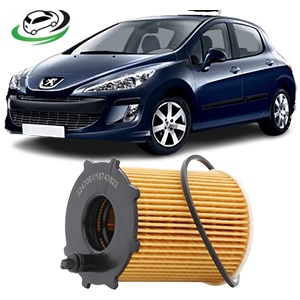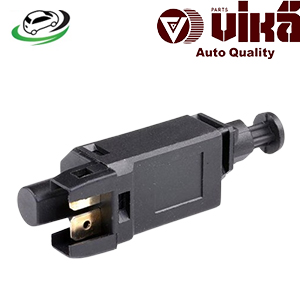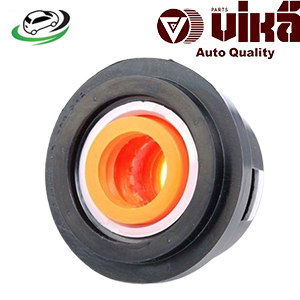-20%
Get VW Golf II/III/ Jetta II/ Lupo I (6X1 6E1)/ Polo III (6N1)/ Caddy II MPV Bearing Ring 191711190A
A bearing ring is a precision-manufactured component that forms part of a bearing assembly, supporting the load and facilitating the smooth, low-friction movement of the bearing. Bearings typically consist of two rings: an inner ring and an outer ring, along with rolling elements (such as balls, rollers, or needles) and a cage that separates the rolling elements.
- Inner Ring: The inner ring fits on the rotating shaft of a machine. It supports the radial or axial load from the rotating shaft and transmits the load to the rolling elements.
- Outer Ring: The outer ring is mounted on the machine’s housing and remains stationary. It provides a raceway for the rolling elements and supports the external forces.
The bearing rings are manufactured from durable, high-quality materials to withstand the stresses of continuous motion and heavy loads, making them crucial for the bearing’s overall performance and longevity.
2. Functions of Bearing Rings
The primary functions of the bearing rings are as follows:
2.1. Providing a Raceway for Rolling Elements
The inner and outer rings create the raceways (tracks) for the rolling elements of the bearing. These rolling elements, such as balls or rollers, move between the rings, reducing friction between the moving parts of the machinery. The precision of the raceways directly impacts the bearing’s efficiency, as well as the distribution of loads and wear patterns.
2.2. Supporting Loads
Bearings are designed to support various types of loads, including radial loads (forces perpendicular to the axis of rotation), axial loads (forces parallel to the axis), or a combination of both. The bearing rings transmit these loads from one part of the machine to another, ensuring smooth operation and preventing damage to the machine components.
2.3. Minimizing Friction
Bearing rings, along with the rolling elements, help minimize friction between two surfaces that are in relative motion. By reducing friction, they enable more efficient operation, prolong the life of machinery, and reduce wear on other parts.
2.4. Facilitating Smooth Rotation
The inner ring rotates along with the shaft while the outer ring remains stationary. This rotational movement allows the connected components to rotate smoothly, reducing energy loss and mechanical resistance.
3. Types of Bearing Rings
There are several types of bearing rings based on the type of bearing and the application:
3.1. Ball Bearing Rings
Ball bearing rings are used in ball bearings, which are designed for high-speed and light-load applications. The rolling elements in ball bearings are spherical balls, and the rings provide raceways for these balls to roll smoothly. These rings are commonly used in automotive applications, electric motors, and home appliances.
3.2. Roller Bearing Rings
Roller bearing rings are used in roller bearings, where cylindrical or tapered rollers are the rolling elements. These bearings are designed to handle heavier loads than ball bearings. The rings provide raceways for the rollers, which contact the surface along a line (rather than a point like in ball bearings). They are typically used in heavy machinery, construction equipment, and industrial applications.
3.3. Needle Bearing Rings
Needle bearing rings are used in needle roller bearings, which have long, thin rolling elements. These bearings are designed to handle high loads while occupying a smaller space. The rings in needle bearings are typically narrower than those in other types of bearings and are used in applications like gearboxes, transmissions, and automotive engines.
3.4. Tapered Roller Bearing Rings
Tapered roller bearing rings are found in tapered roller bearings, which are used in applications that require the handling of both radial and axial loads. These rings are designed with angled raceways, allowing the tapered rollers to bear the loads more effectively. Tapered roller bearings are commonly found in vehicle axles, conveyor systems, and heavy-duty industrial equipment.
3.5. Thrust Bearing Rings
Thrust bearing rings are designed to handle axial loads. The rolling elements in thrust bearings are typically balls or cylindrical rollers, and the rings provide the necessary support to resist the axial forces. Thrust bearing rings are commonly used in applications like car steering mechanisms, rotors, and high-speed machinery.
4. Materials Used in Bearing Rings
Bearing rings are typically made from high-quality materials to ensure they can handle the stresses of high-speed rotation and heavy loads. The most common materials used for bearing rings include:
4.1. Chrome Steel (52100 Steel)
Chrome steel is one of the most commonly used materials for bearing rings due to its high hardness, wear resistance, and fatigue strength. It is well-suited for high-load, high-speed applications.
4.2. Stainless Steel
Stainless steel bearing rings are used in applications where corrosion resistance is critical. While not as hard as chrome steel, stainless steel provides excellent resistance to rust and oxidation, making it ideal for use in marine environments or food processing equipment.
4.3. Ceramic
Ceramic bearing rings are used in high-speed, high-temperature applications where traditional metal bearings might fail. Ceramics offer excellent heat resistance, reduced friction, and are lighter than steel. However, they are more brittle and expensive than metal rings.
4.4. Bronze or Brass
Bronze and brass are sometimes used in special bearing applications, particularly where low-speed, high-friction conditions are present. These materials are softer than steel but provide good resistance to galling (a form of wear).
5. Benefits of Bearing Rings
Bearing rings offer several key benefits to the operation of machinery and vehicles:
5.1. Reduced Friction
The smooth raceways of bearing rings help reduce friction between moving parts, leading to more efficient operation and less energy loss. This allows machinery to run more smoothly and with less wear.
5.2. Increased Longevity
By providing a durable surface for the rolling elements to move against, bearing rings help extend the life of both the bearing and the machinery they support. Properly maintained bearing rings can operate for thousands of hours without failure.
5.3. Improved Load Handling
The design of the bearing rings ensures that they can handle both radial and axial loads, distributing the forces evenly across the bearing and preventing localized wear or damage.
5.4. High-Speed Performance
Precision-manufactured bearing rings allow for high-speed operation with minimal friction. This makes them ideal for applications where rotational speed is critical, such as in electric motors, turbines, and automotive wheels.
6. Common Issues with Bearing Rings
Despite their durability, bearing rings can experience several issues if not properly maintained:
6.1. Wear
Over time, bearing rings can wear down due to the constant motion of the rolling elements. This wear can lead to increased friction, reduced performance, and eventual bearing failure. Regular lubrication can help mitigate wear.
6.2. Corrosion
In environments where moisture or chemicals are present, bearing rings made from steel can corrode, leading to rough surfaces and increased friction. Stainless steel or coated rings can help prevent this issue.
6.3. Brinelling
Brinelling occurs when the rolling elements leave indentations on the raceways of the bearing rings due to excessive load or impact. These indentations increase friction and can lead to premature bearing failure.
6.4. Fatigue Cracking
Fatigue cracking can occur in bearing rings due to repeated stress cycles. This can lead to cracks forming on the raceways, which can eventually cause the bearing to fail. Fatigue cracking is more common in high-speed, high-load applications.
7. Maintenance of Bearing Rings
Proper maintenance is key to extending the life of bearing rings and ensuring reliable operation:
7.1. Regular Lubrication
One of the most important aspects of bearing ring maintenance is regular lubrication. Lubricants reduce friction between the rolling elements and the rings, preventing wear and heat buildup. Both grease and oil can be used, depending on the application.
7.2. Inspection for Wear and Damage
Regularly inspecting bearing rings for signs of wear, such as rough surfaces, brinelling, or cracks, can help prevent catastrophic bearing failures. Early detection allows for timely replacement or repair.
7.3. Proper Installation
Incorrect installation of bearing rings can lead to misalignment, uneven wear, and premature failure. Care should be taken to follow the manufacturer’s installation guidelines and use the proper tools for installation.
7.4. Environmental Control
Bearing rings should be protected from corrosive environments, excessive moisture, and dirt. Seals or shields can be used to keep contaminants out of the bearing assembly and extend the life of the rings.
7.5. Temperature Monitoring
Bearing rings should be monitored for excessive heat, which can indicate insufficient lubrication or overloading. High temperatures can reduce the hardness of the bearing rings and lead to premature wear or failure.
8. Conclusion
Bearing rings are fundamental components in the operation of machinery and vehicles, providing raceways for rolling elements, supporting loads, and minimizing friction. Their design, material selection, and maintenance are critical to the performance and longevity of the entire bearing assembly. By selecting the right type of bearing ring for the application and maintaining it properly, businesses can improve machinery efficiency, reduce downtime, and save on repair costs. Regular lubrication, proper installation, and environmental protection are key to ensuring bearing rings perform optimally over their lifespan.
Follow us on Facebook for more parts.






Reviews
Clear filtersThere are no reviews yet.